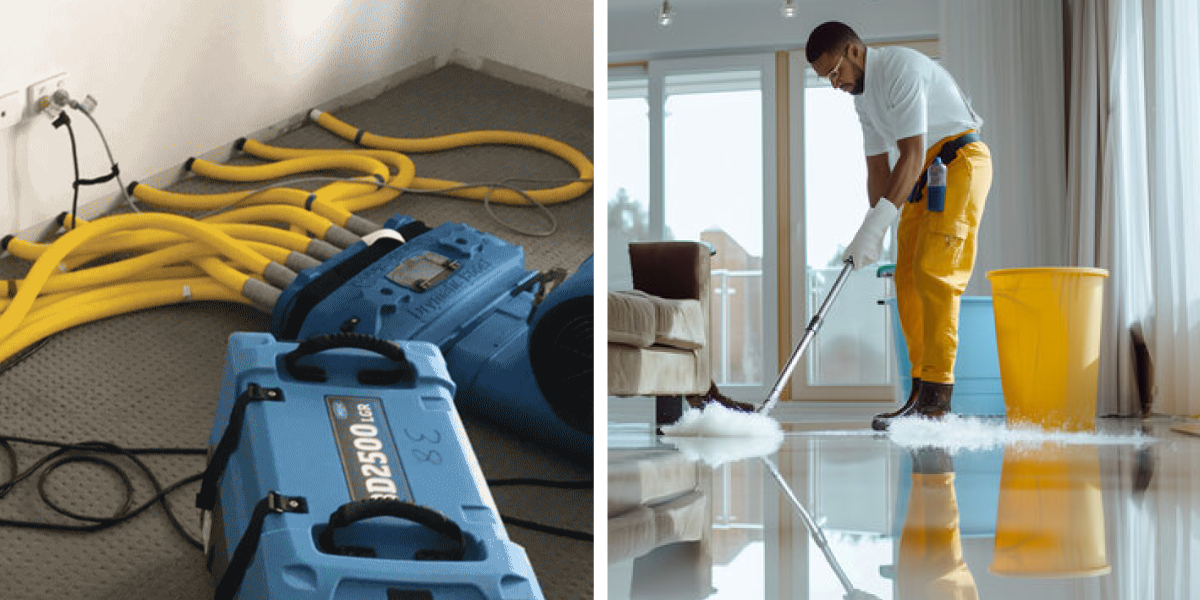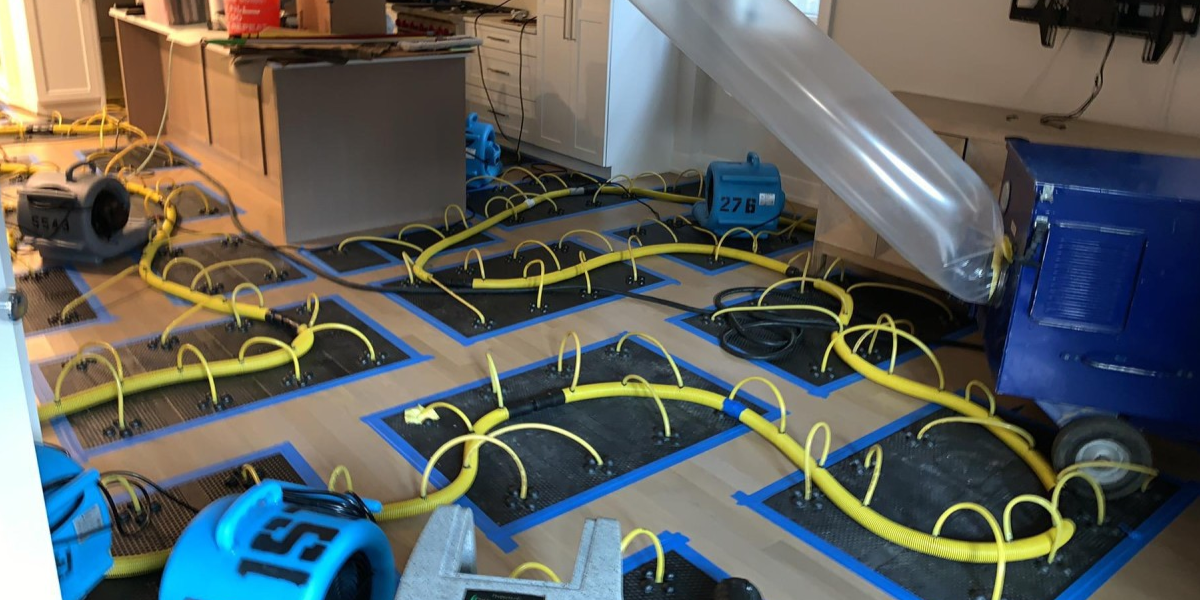Hey, let’s say you walk into your house, and—boom! Water everywhere. Maybe a pipe burst, the washing machine overflowed, or a storm flooded your place. What do you do now?
You might hear terms like water mitigation and water restoration, but what do they actually mean? Which one do you need?
Here’s the deal:
- Water mitigation is about stopping the damage from getting worse.
- Water restoration is about fixing the damage and making everything like new again.
Both are important, but they happen at different times. If you choose the wrong one first, you could waste time and money.
Don’t worry—we’ll break everything down here, showing the exact difference between water mitigation vs. water restoration.
By the end, you’ll know exactly what to do if water damage ever happens to you.
Let’s get into it!
What is Water Mitigation?

So, what does mitigation mean for water damage?
Water mitigation is the first thing you do when water damage happens. Think of it as damage control—it doesn’t fix everything, but it stops things from getting worse. The goal is to remove standing water fast, dry everything out, and prevent mold from growing.
It also helps protect your home’s structure and your belongings so the damage doesn’t spread. Without proper mitigation, water can seep into walls, weaken floors, and cause even bigger problems.
That’s why acting quickly is so important!
Common Water Mitigation Services
| Service | Purpose |
| Water clean-up and removal | Extracts standing water to prevent the spread |
| Drying and dehumidification | Removes moisture to stop mold growth |
| Temporary repairs | Covers leaks and seals cracks to prevent more damage |
| Structural stabilization | Supports weak areas to avoid collapse |
A professional water mitigation company has the tools and skills to act fast. They use industrial pumps, air movers, and dehumidifiers. Their job is to control the damage before restoration begins.
What is Water Damage Restoration?
Water damage restoration is the second step after mitigation. Once the water is gone and everything is dry, it’s time to fix and rebuild what was damaged. This means repairing walls, floors, ceilings, and even furniture that got ruined.
If mold or bacteria have started to grow, restoration includes removing them completely to make the place safe again. The goal is to restore your home or business to how it was before the damage happened so it looks and feels normal again.
Common Water Restoration Services
| Service | Purpose |
| Mold remediation | Removes mold and prevents future growth |
| Structural repairs | Fixes floors, walls, ceilings, and foundations |
| Rebuilding damaged areas | Restores your home to its original condition |
| Sanitization & odor removal | Cleans and deodorizes affected areas |
So, Water Restoration Services: Who Does It?
Restoration requires skilled contractors. They fix water damage and ensure your home or business is safe to live in again.
Key Differences Between Water Mitigation VS Water Restoration

Water mitigation and water restoration are not the same. They work together but have different goals.
Let’s break it down.
- Mitigation: Prevents further damage (first step).
- Remediation: Removes hazards like mold and bacteria.
| Feature | Water Mitigation | Water Restoration |
| Purpose | Prevents further damage | Repairs & restores damage |
| Timing | Immediate response | Longer process |
| Services | Water clean-up, drying | Mold removal, reconstruction |
| Cost | Lower cost, faster | Higher cost, longer |
A property might need both services, but mitigation always comes first.
When Do You Need Water Mitigation?

You need water mitigation when damage just happened, and you want to stop it from getting worse. Examples include:
- Burst pipes.
- Flooding from heavy rain.
- Roof leaks after a storm.
Why is Quick Water Clean-Up Important?
Acting fast can reduce repair costs by up to 50%. Water can seep into walls, floors, and furniture. The faster you remove it, the less damage occurs.
Hiring a professional water mitigation company ensures fast action with industrial-grade equipment.
When Do You Need Water Restoration Services?

After mitigation, restoration starts. You need water damage restoration services when:
- There is structural damage.
- Mold starts growing.
- Floors, walls, or ceilings need rebuilding.
Importance of Hiring Experts
Water damage repair is complex. Professionals ensure that everything is dry, safe, and properly repaired.
You can visit this insightful guide to learn how to check for mold after water damage.
So, Can You Have One Without the Other?

Well, in some cases, you can. For example, if the damage is small, just mitigation (fixing the immediate issue) might be enough to stop it from getting worse. But restoration (fixing everything back to normal) without mitigation is rare.
If you skip mitigation, the problem could get worse over time. This ultimately makes restoration harder. In most situations, you’ll need both: mitigation comes first to handle the immediate problem, and then restoration follows to fully fix everything.
How to Choose the Right Water Damage Service

When choosing the right water damage service, there are a few important factors to think about.
First, consider the extent of the damage—this helps you figure out if you need just mitigation, restoration, or both. Also, check your insurance coverage because some policies might cover mitigation but not the full restoration process.
The experience of the company is key, too, because skilled professionals do better work and can save you money in the long run. When hiring, make sure to look for certified professionals, ask for customer reviews, get a written estimate before they start work, and check if they work with your insurance.
If you’re looking for the best water damage restoration service near you, SOS Restoration can help.
We handle both water mitigation and restoration—stopping the damage from spreading and then fixing your home. We fix leaks, remove water, and restore your space quickly. We also deal with mold, bacteria, and repair things like drywall and floors.
We’re available 24/7 and can even work with your insurance!
Wrapping Up
So, that’s all about the core differences between water mitigation vs. water restoration. Water damage is a big deal, and the key is to act quickly. Water mitigation helps stop the damage from spreading, while water restoration fixes and rebuilds what was affected. Most of the time, you’ll need both to fully handle the situation.
So, if you’re dealing with water damage, don’t wait—call a professional company right away. The sooner you act, the more you can save in the long run!
FAQs
Check out this insightful blog to learn how to get insurance to pay for water damage. |

